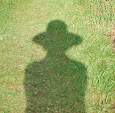BBC Radio 4 In Our Time programme with Melvyn Bragg talked about the role of a 19th century lady mathematician Ada Byron, Countess of Lovelace, and her work with Charles Babbage.

Augusta Ada was the daughter of a brief marriage between the poet Lord Byron and Anne Isabelle Milbanke, who separated from Byron just a month after Ada was born. She was was raised by her mother, Lady Byron (who Byron called his "Princess of Parallelograms").
 She was well educated and moved in elite London society. At 17 years old (1833) she met Charles Babbage who is often felt to be the 'father of the modern computer' and they began a voluminous correspondence on the topics of mathematics.
She was well educated and moved in elite London society. At 17 years old (1833) she met Charles Babbage who is often felt to be the 'father of the modern computer' and they began a voluminous correspondence on the topics of mathematics.
Babbage had made plans in 1834 for a new kind of calculating machine (although the Difference Engine was not finished), an Analytical Engine and Ada became interested in this. His parliamentary sponsors refused to support a second machine with the first unfinished, but Babbage found sympathy for his new project abroad. In 1842, an Italian mathematician, Louis Menebrea, published a memoir in French on the subject of the Analytical Engine. Babbage enlisted Ada (whom he called his "Enchantress of Numbers") as translator for the memoir and during a nine-month period in 1842-43, she worked feverishly on the article and a set of Notes she appended to it. She understood the plans for the device as well as Babbage but was better at articulating its promise. She rightly saw it as what we would call a general-purpose computer.
Basically, she described how it could be 'programmed'. She stated "Many persons who are not conversant with mathematical studies imagine that because the business of [Babbage's Analytical Engine] is to give its results in numerical notation, the nature of its processes must consequently be arithmetical and numerical, rather than algebraical and analytical. This is an error. The engine can arrange and combine its numerical quantities exactly as if they were letters or any other general symbols; and in fact it might bring out its results in algebraical notation, were provisions made accordingly." In other words, it was not necessary to limit it to numbers; letters or other symbols could be used. (Calculators must use numbers.)

Augusta Ada was the daughter of a brief marriage between the poet Lord Byron and Anne Isabelle Milbanke, who separated from Byron just a month after Ada was born. She was was raised by her mother, Lady Byron (who Byron called his "Princess of Parallelograms").
 She was well educated and moved in elite London society. At 17 years old (1833) she met Charles Babbage who is often felt to be the 'father of the modern computer' and they began a voluminous correspondence on the topics of mathematics.
She was well educated and moved in elite London society. At 17 years old (1833) she met Charles Babbage who is often felt to be the 'father of the modern computer' and they began a voluminous correspondence on the topics of mathematics.Babbage had made plans in 1834 for a new kind of calculating machine (although the Difference Engine was not finished), an Analytical Engine and Ada became interested in this. His parliamentary sponsors refused to support a second machine with the first unfinished, but Babbage found sympathy for his new project abroad. In 1842, an Italian mathematician, Louis Menebrea, published a memoir in French on the subject of the Analytical Engine. Babbage enlisted Ada (whom he called his "Enchantress of Numbers") as translator for the memoir and during a nine-month period in 1842-43, she worked feverishly on the article and a set of Notes she appended to it. She understood the plans for the device as well as Babbage but was better at articulating its promise. She rightly saw it as what we would call a general-purpose computer.
Basically, she described how it could be 'programmed'. She stated "Many persons who are not conversant with mathematical studies imagine that because the business of [Babbage's Analytical Engine] is to give its results in numerical notation, the nature of its processes must consequently be arithmetical and numerical, rather than algebraical and analytical. This is an error. The engine can arrange and combine its numerical quantities exactly as if they were letters or any other general symbols; and in fact it might bring out its results in algebraical notation, were provisions made accordingly." In other words, it was not necessary to limit it to numbers; letters or other symbols could be used. (Calculators must use numbers.)
_______________________________________________________________
Text from www.sdsc.edu/ScienceWomen/lovelace.html
Photos from Widipedia.




No comments:
Post a Comment